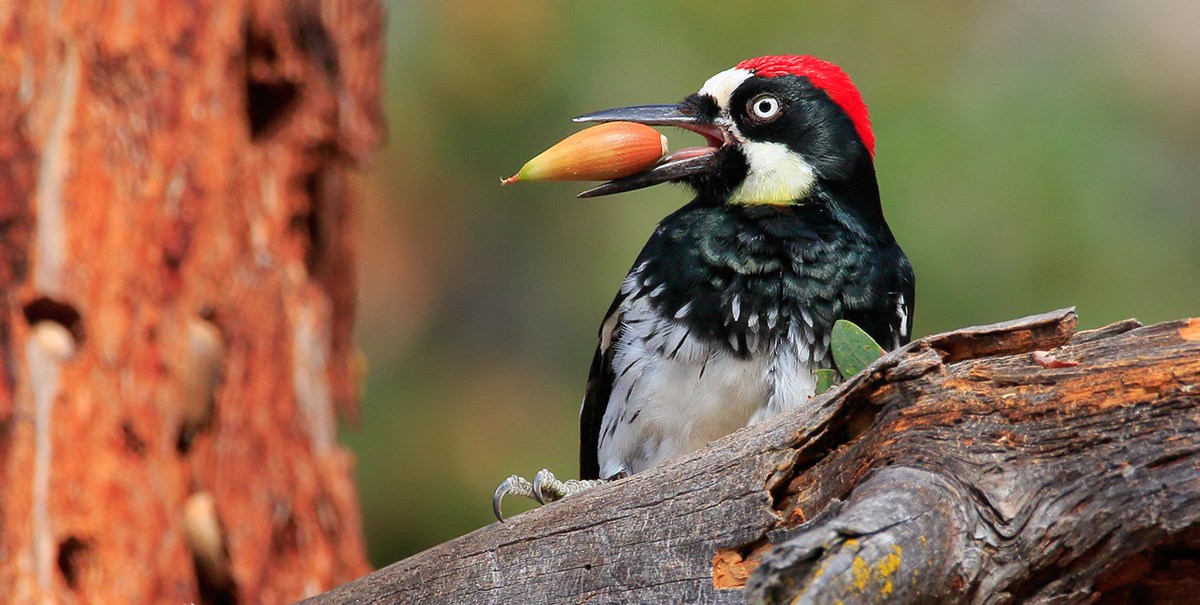Observing Woodpeckers in Florida: Variety Diversity and Circulation
Observing Woodpeckers in Florida: Variety Diversity and Circulation
Blog Article
Discover the Fascinating Globe of Woodpeckers: Everything You Need to Know
The globe of woodpeckers is a world filled with one-of-a-kind habits, detailed adaptations, and a diverse array of species. From their environments and circulation patterns to their feeding practices and specialized physiological features, woodpeckers have actually long mesmerized the rate of interest of ornithologists and nature fanatics alike. Comprehending the complexities of these interesting birds gives a look right into the intricate interaction between their biology and the setting. As we discover the globe of woodpeckers further, we uncover a riches of info that clarifies their relevance in ecological communities and the challenges they face in an ever-changing globe.
Woodpecker Habitats and Circulation
In North America, for example, woodpeckers can be spotted in both coniferous and deciduous forests, using their strong beaks to forage for bugs and develop nesting tooth cavities in trees. In Africa, certain woodpecker types have adjusted to dry settings, such as the acacia forests, where they play a vital role in regulating insect populations.

Feeding Behaviors and Diet
Woodpeckers utilize their strong beaks to drill into the bark of trees, penetrating for insects and larvae hidden underneath the surface area. In addition to pests, woodpeckers also take in nuts, seeds, fruits, and sap.
Woodpeckers are understood for their drumming actions, which serves not just to connect with other woodpeckers yet likewise to locate food. The rapid drumming audio is produced by the bird pecking on resonant surface areas like dead trees or metal posts. This behavior can draw in pests hidden in the wood, permitting the woodpecker to identify their presence and prey on them.
Unique Adjustments for Tree Climbing
In their skilled search of bugs hidden within tree bark, woodpeckers have progressed remarkable physiological features that furnish them with distinct adaptations for efficient tree climbing. One of the vital adjustments is their zygodactyl feet, with 2 toes pointing ahead and 2 aiming backward, providing a solid grasp on tree trunks. This customized foot plan permits woodpeckers to cling to vertical surfaces easily, enabling them to go up and down trees with dexterity. Furthermore, woodpeckers have stiff tail feathers that function as a supportive prop while they climb, assisting in equilibrium and stability. Their solid, chisel-like beaks are not just utilized for drilling right into timber yet also for clutching onto bark as they ascend tree trunks. Woodpeckers have strong neck muscles and a special skull framework that take in the influence of consistent pecking, enabling them to climb up and down without triggering harm to their minds. These adjustments showcase the amazing transformative design that makes it possible click to read for woodpeckers to browse trees with precision and performance.
Diverse Woodpecker Species Worldwide
With over 200 various types spread out across various habitats worldwide, the family of Picidae incorporates an impressive variety of woodpeckers. These birds can be discovered in woodlands, forests, savannas, and also urban locations, showcasing their versatility to various settings. From the famous Northern Flicker in The United States And Canada to the colorful and elusive Crimson-backed Flameback Look At This in Asia, each woodpecker types exhibits one-of-a-kind characteristics in terms of quill, actions, and habitat choice.
Woodpeckers differ greatly in dimension, with the diminutive Downy Woodpecker gauging around 6-7 inches in length, while the effective Lineated Woodpecker can rise to 17 inches - Woodpeckers in Florida. Their beaks also are available in various sizes and shapes, showing their feeding practices. Some types focus on removing pests from tree bark, like the Acorn Woodpecker, while others, such as the Black-cheeked Woodpecker, prey on fruits and seeds

Preservation Efforts and Challenges
Preservation campaigns for woodpecker populations are essential in minimizing the influence of environment loss and various other threats dealing with these diverse avian types. Woodpeckers encounter numerous difficulties to their survival, mostly as a result of logging, urbanization, climate modification, and intrusive varieties. To resolve these problems, preservation efforts concentrate on safeguarding and recovering woodpecker habitats, applying sustainable forestry methods, and increasing awareness about the relevance of these birds in environments.
One significant obstacle in woodpecker conservation is the fragmentation of their habitats, leading to separated populaces that are a lot more vulnerable to termination - Woodpeckers in Florida. Preservationists function to develop wild animals hallways and secured areas that connect these fragmented habitats, permitting woodpeckers to relocate in between various locations for feeding, reproducing, and sanctuary

Final Thought
In verdict, woodpeckers are remarkable birds with special adaptations for tree climbing and feeding actions. They can be located in diverse habitats worldwide, facing conservation challenges due to environment loss and human tasks. Comprehending their environments, diet plans, and behaviors is important for conservation efforts to protect these important bird species. Further research and preservation look at this website activities are required to make sure the survival of woodpeckers in the wild.
Report this page